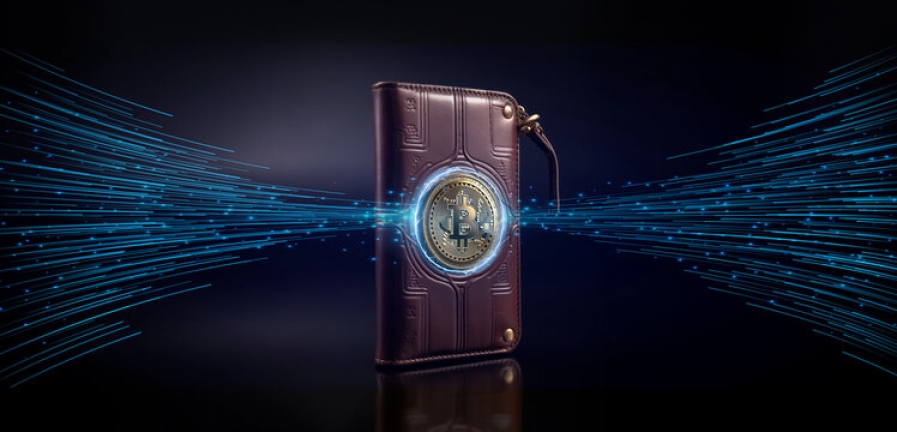Building Your Own NFT Wallet: A Step-by-Step Development Guide
 Aurora Grace
Aurora Grace
The booming popularity of Non-Fungible Tokens (NFTs) has ignited a demand for secure and user-friendly NFT wallets. Creating your own NFT wallet is a rewarding venture that allows you to contribute to the growing NFT ecosystem. In this step-by-step development guide, we will walk through the essential stages of building an NFT wallet, covering everything from choosing the blockchain to deploying and maintaining the final product.
What is NFT Wallet?
An NFT (Non-Fungible Token) wallet is a digital wallet specifically designed to store, manage, and interact with non-fungible tokens on blockchain platforms. NFTs represent unique digital assets such as digital art, collectibles, or virtual real estate, each possessing distinct ownership and provenance. The NFT wallet enables users to securely hold their NFTs, facilitating easy transactions, transfers, and the exploration of NFT marketplaces. These wallets leverage blockchain technology to ensure transparency, immutability, and authenticity of NFT ownership, allowing users to showcase, trade, and participate in the burgeoning ecosystem of unique digital assets.
Define Your Project Scope and Goals
Before diving into development, it's crucial to define the scope and goals of your NFT wallet project. Consider the target audience, desired features, and the blockchain(s) you want to support. Understanding the specific needs of your users will guide the development process and help you create a wallet that meets their expectations.
Choose the Blockchain
Selecting the right blockchain for your NFT wallet is a pivotal decision. Ethereum is a popular choice due to its widespread adoption and established NFT standards like ERC-721 and ERC-1155. Alternatively, consider emerging blockchains like Binance Smart Chain, Flow, or Polygon for potential advantages in scalability and cost-effectiveness.
Smart Contract Development
NFTs rely on smart contracts to define their properties and functionalities. In this step, you'll need to develop smart contracts that adhere to the chosen blockchain's standards. For Ethereum, this typically involves creating ERC-721 or ERC-1155 compliant contracts. Pay meticulous attention to contract security and functionality to ensure a robust foundation for your NFT wallet.
User Authentication and Security
Implementing robust user authentication and security features is paramount to safeguarding your users' assets. Consider incorporating biometric authentication, two-factor authentication, and secure key management to enhance the overall security of your NFT wallet. Security should be a top priority throughout the development process.
Wallet API Integration
Integrate your NFT wallet with blockchain APIs to facilitate real-time data retrieval. This integration is essential for displaying accurate information about users' NFT holdings, transaction history, and market data within the wallet interface. Ensure compatibility with the chosen blockchain's APIs and follow best practices for data retrieval.
Develop the User Interface (UI)
Create an intuitive and user-friendly interface for your NFT wallet. The UI should allow users to manage, view, and trade their NFTs seamlessly. Consider implementing features like a gallery view of NFT collections, transaction history, and a user-friendly marketplace interface. Strive for a design that balances aesthetics with functionality.
Testing and Quality Assurance
Thorough testing is critical to identify and rectify potential vulnerabilities or bugs in your NFT wallet. Conduct unit testing, integration testing, and security audits to ensure a secure and reliable user experience. Engage in continuous testing throughout the development process to catch and address issues promptly.
Deployment
Once testing is complete and you're confident in the security and functionality of your NFT wallet, it's time to deploy it to the chosen blockchain. Follow the deployment guidelines provided by the blockchain platform, whether it's deploying to the Ethereum mainnet or another blockchain.
Maintenance and Updates
After deployment, ongoing maintenance and updates are crucial. Regularly monitor for emerging challenges, improve performance, and stay aligned with evolving industry standards. Address user feedback and continue to enhance your NFT wallet to provide the best possible user experience.
Considerations for Future Development
As you celebrate the successful deployment of your NFT wallet, keep an eye on future trends and opportunities. Consider exploring interoperability with other blockchains, integrating Web3 technologies, or enhancing the user experience with innovative features. Staying ahead of the curve will position your NFT wallet for long-term success in the dynamic NFT landscape.
Conclusion
Building your own NFT wallet is an exciting and rewarding journey that allows you to contribute to the vibrant world of NFTs. By following this step-by-step development guide, you can create a secure, user-friendly, and feature-rich NFT wallet that meets the needs of your target audience. As you navigate through the stages of development, remember to prioritize security, user experience, and adaptability to emerging trends. The successful creation of your NFT wallet will not only empower users in managing their digital assets but also contribute to the continued growth of the NFT ecosystem.
Subscribe to my newsletter
Read articles from Aurora Grace directly inside your inbox. Subscribe to the newsletter, and don't miss out.
Written by
